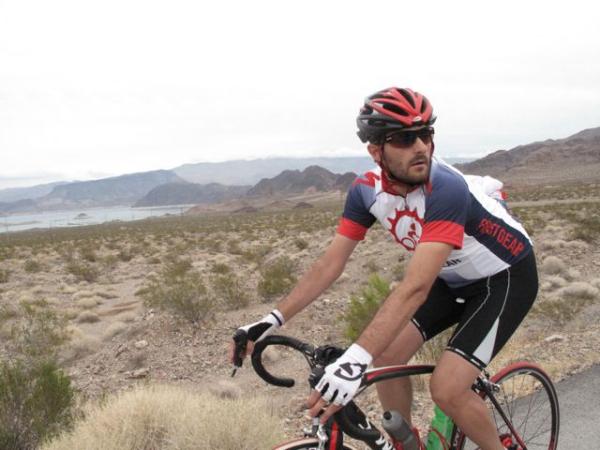The pride and the passion of Santini
Italian clothing company has kitted cycling's champions for decades

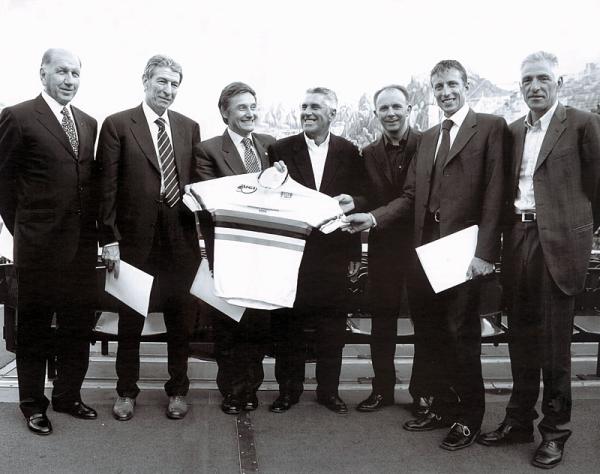
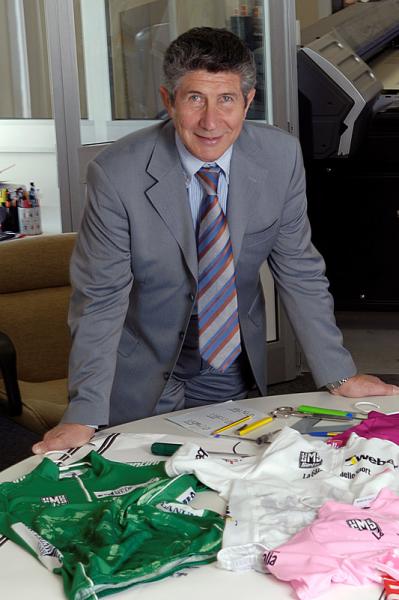
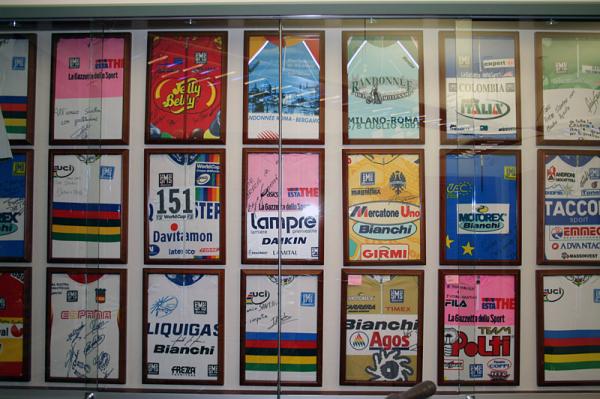
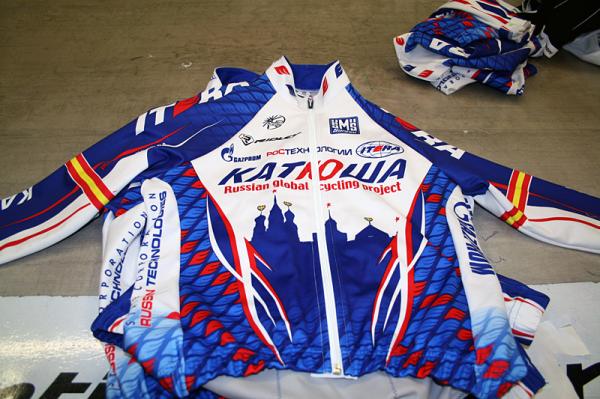
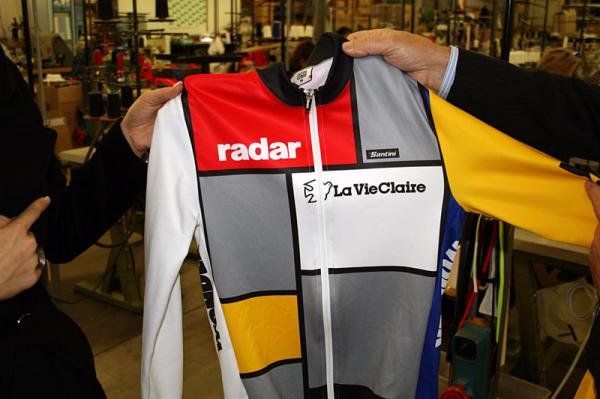
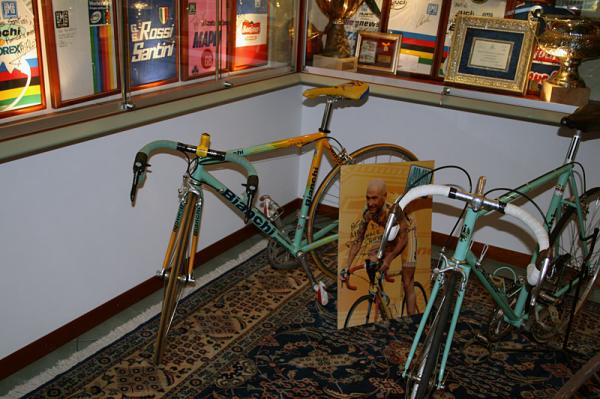
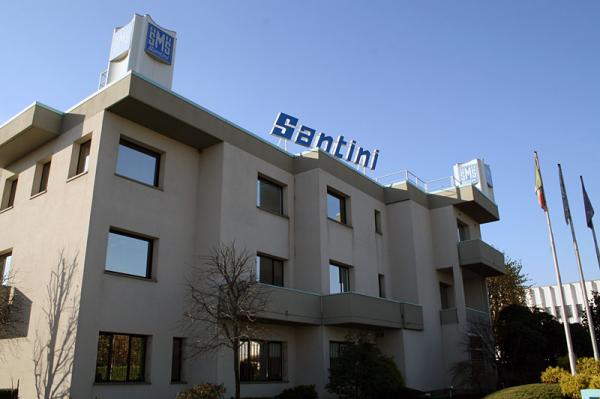
It's a typically drab November afternoon in England and in the Future Publishing offices the cycling editorial teams have been summoned to meet with a guest from Italy. It's Paola Santini, the daughter of Pietro Santini, the owner and founder of the Santini clothing company. She's here to take us through the new range.
Now I have a confession to make: I'm not that interested in fabrics, technologies and specifications. Whether it's frames, bike components, jerseys or track mitts; if they look the part then that's usually good enough for me. And when it comes to jerseys that's certainly the case. I could talk to you for hours about my favourite team jerseys, their colours, the riders that wore them and the latest debate that's circled around our office; whether the holder of the yellow jersey should wear head-to-toe yellow or just the jersey and their team-kitted shorts. It's one of the things I love about cycling.
And as I find myself flicking through the company's catalogue, staring at Italian models as they fail to make bib shorts sexy, I stumble across a picture of Pietro sitting on a stool. Next to him stand a rack of jerseys. I don't recognise them all but some are instantaneously familiar. Lampre, Mapei, the Giro's maglia rosa, Peugeot, Gewiss, Mercatone Uno, the list goes on.
"Your father, he made jerseys for all these teams?" I ask. It's the first thing I've said since being introduced.
"Yes. And many, many more. You should talk to him. He's got some great stories," Paola offers, almost recognising my apathy towards Polyamide and 22 percent Elastan.
A few weeks later I touch down in Bergamo, Italy and after a short drive find myself standing in a board room waiting to meet the founder of the Santini clothing company.
"He comes in everyday," Paola says as she hands me an espresso. "He's the first to arrive and last to leave. He's here on Saturday, reading cycling magazines. It drives my mother mad you know. She's always telling him he doesn't need to be in the office on the weekend."
Get The Leadout Newsletter
The latest race content, interviews, features, reviews and expert buying guides, direct to your inbox!
"So why does he do it?"
"He's mad about cycling," she shrugs. "He comes in on the weekends, in a suit, just to read up on all the cycling news that's happened. On Monday mornings I find all the magazines on my desk with Post-it notes inside for all the pages I should read."
"How long has he been doing this?"
"Coming in to read magazines? Since I can remember."
Humble beginnings
Pietro Santini has no background in business. After a short stint at racing in the junior ranks of Italian cycling he found himself, by the age of eighteen, working as a mechanic in a local garage, his dreams of one day riding as a professional over.
But by a twist of fate Santini found himself back within cycling. A freak accident in the garage left him with a broken leg and months at home recuperating. His sisters, who were making a living through knitting, began to teach him and within a few weeks Santini had caught the bug. Of course one of the first garments he made was a cycling jersey.
With contacts still in the sport he quickly began showcasing his new talent and started producing clothing for a few friends, before he reached a stage where he could take it up full-time and started working just for cyclists.
In 1965 he founded the cycling company at his home and when the garage called one day offering him his old job back Santini politely declined. By the mid 1970s Santini was producing garments for the likes of the Peugeot cycling team, and later Bernard Hinault and Greg LeMond.
Like every young cycling fan in Italy Santini grew up adoring cycling. In those days, and coming from a working class family, owning a bike was a tremendous privilege, families tended to share one. The adolescent Santini used to sneak off with his father's bike, ride to watch races, often spending hours on the bike just to get a glimpse of the likes of Fausto Coppi and Gino Bartali. Those few seconds of joy as the peloton swooped passed were worth the certainty of a scolding he'd receive once he returned home.
"Did you know I used to race with [Felice] Gimondi and [Gianni] Motta? They were legends and I used to race against them when we were children, right here in Bergamo," he says almost immediately after walking into the room. Now in his late 60s he's built one of the biggest clothing brands in Europe, has a staff of over one hundred local residents and unlike many of his rival manufacturing brands, still produces all his products in Italy. The lure of cheaper Far Eastern production hasn't bitten yet.
"Racing is a loose term though," he continues. "We'd line up at the start but I wouldn't see them again until the finish. We still go out and ride to this day but just like now I only see them at the start and finish."
Santini has seen many champions come and go but his love for the sport has remained, despite his stance on the doping situation that surrounds cycling.
"It's the most frustrating part of out sport," he says, the jovial exterior quickly disappearing. "You can see a rider win and but you don't know if the next day they'll be caught cheating. You can't believe in champions anymore, even if you're a fan of the sport. As a fan and a businessman Pantani was the biggest disappointment. He was able to move people and with him you were glued to the television. Seeing a champion like that end his career and life because of doping was really sad to see. I still have an affection for him but after that, tell me, who can we believe in?"
Pantani's Giro and Tour bike neatly sits in the lobby of Santini's headquarters, surrounded by other memorabilia and jerseys he's produced over the years. Many of them are signed by riders.
"Bianchi and Pantani gave me that bike. He came to visit me in the winter of 1998, just after he'd won the double. It was a total surprise and I'll admit I got pretty emotional. Would you like to ride it?"
"He still thinks the bike isn't his and that Bianchi will come back for it," adds Paola.
I gently decline the offer. Somehow the thought of riding Pantani's bike around a car park in Italy leaves me with the feeling that the Pirate would be turning in his grave if he knew.
Instead, we stroll through Santini's factory, witnessing the processes that go into designing and producing the team kits. As it's December most of the teams within Santini's range have confirmed their sponsors. "Androni, they were probably the last to approve the design," Santini says. "They have so many names on their jersey, though, that it go right up until the last minute. A lot of riders, if they're new to us come here for measuring. We travel to a few teams but if a rider is close by then he'll stop by."
A middle-aged women in a corner of the warehouse is surrounded by what looks like hundreds of Katusha arm warmers and leggings. Santini will produce the kit for the Russian team for the second successive year and each rider's kit is being neatly folded, packaged ready for distribution.

"Do you have a favourite design? One that you're most proud of?"
"La Vie Claire, without a doubt. That jersey was groundbreaking in terms of design and construction. Back then every jersey was plain with just a bit of embroidery on the sleeves and neck. The Mondrian design totally changed that so that each jersey was like a work of art. It totally transformed the way in which we made jerseys."
"Some good riders wore that jersey too, didn't they?"
"One of my favourites," Santini says. "Hinault was my favourite rider of all time. I watched Coppi when I grew up. I raced against the likes of Motta and Gimondi and I saw Pantani rule the world but Hinault was a winner and had a passion that no one could match. He honoured races and it really moved me. He showed that cycling isn't just about mathematics. It's about passion and feeling."
During one of Hinault's Tour wins the Frenchman was in yellow and was forced out of his Santini kit into another brand that sponsored the yellow jersey. Wearing new shorts, the ride complained about the stitching, fabric and the padding. He put the call into Santini for any help he could provide.
"The Tour was in the Alps by then but in the morning after I spoke to Hinault I drove through and met Hinault in his hotel. After a short chat I spent the night stitching the padding from our brand into his new shorts. He won the race. I can't take credit but I did what I could to help and as a thank you Bernard gave me a Look frame. It was one of the very first carbon models and it's still in my garage today."
"Does that happen a lot? You having to bail out riders?"
Monica, Pietro's oldest daughter smiles, asking her father to tell me about Oscar Freire at the Vuelta.
"Ah, Oscar is a great rider. We made his clothes at Mapei and when he was with the Spanish national team. He changed teams and didn't like the shorts he was in. I remember at the Vuelta he was in lousy form, not helped by a saddle sore. We helped with some new padding and he won two stages."
The next day the press ran with the headline "Freire wins with Santini," after the Spaniard publicly thanked Santini. It kicked off a storm with the true supplier of his team's kit understandably unhappy.
"We didn't like that part of it," he says with a smile.
As we reach the end of Tour, and reach Pantani's bike at the company's reception, Santini explains why he still believes in basing his production in Italy.
"Cycling has been my life and I'm just a fan at heart. We employ people from our region because it's important to give back to the community who supported me when I first started out. If we moved everything to Taiwan we'd lose our control and our sense of pride that we put into our work. It's about passion. At least it always has been for me."
Daniel Benson was the Editor in Chief at Cyclingnews.com between 2008 and 2022. Based in the UK, he joined the Cyclingnews team in 2008 as the site's first UK-based Managing Editor. In that time, he reported on over a dozen editions of the Tour de France, several World Championships, the Tour Down Under, Spring Classics, and the London 2012 Olympic Games. With the help of the excellent editorial team, he ran the coverage on Cyclingnews and has interviewed leading figures in the sport including UCI Presidents and Tour de France winners.
